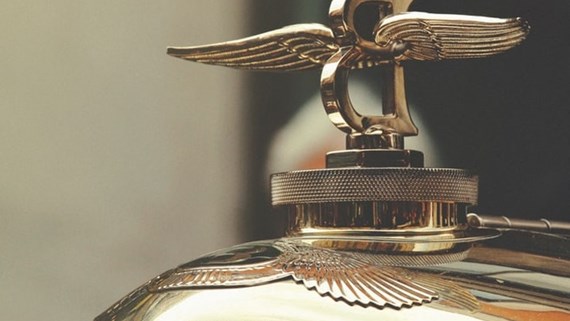Grandmother’s footsteps: Bentley Motors’ trade mark infringement
Insight

In the childhood game of grandmother’s footsteps, the objective is to creep up on “Grandmother” undetected. Judge Hacon used the game as an analogy in a High Court judgment last month to describe Bentley Motors’ “steady encroachment” on the trade mark rights of a small clothing firm, Bentley Clothing. Whilst harmless in a playground context, the court stamped down on the attempts of an established, luxury business to quietly "extinguish” the intellectual property rights of a smaller one. There are some lessons to learn here.
The background to the case
In Bentley 1962 Ltd v Bentley Motors Ltd, the defendant was the world-renowned luxury carmaker, Bentley Motors, and the claimant was a Mancunian, family-owned clothing business called Bentley Clothing. Bentley Motors’ annual turnover is approximately €1.5bn, whilst Bentley Clothing’s is closer to £100,000.
Bentley Clothing had three registered trade marks in relation to clothing and headgear. They attempted to licence these marks to Bentley Motors, who refused. Instead, Bentley Motors tried and failed to cancel Bentley Clothing’s trade marks. Bentley Clothing then commenced a claim alleging that Bentley Motors had infringed the trade marks by using a combination of the famous “B-in-Wings” symbol and the word “BENTLEY” (the “Combination Sign” seen below) on items in their clothing range, such as a £2,400 leather jacket and a £125 rugby shirt.
The law
Trade mark infringement occurs when a registered trade mark is used without the owner’s consent. The ways in which this can happen that are pertinent to this case include the following:
- the sign used by the infringer is identical to the registered trade mark and is used for the same class of goods or services that the trade mark is registered for (s.10(1) Trade Marks Act); or
- the sign used by the infringer is:
- identical to the registered trade mark and is used for a similar class of goods or services that the trade mark is registered for; or
- similar to the registered trade mark and is used for the same or similar class of goods or services that the trade mark is registered for.
But in both of these circumstances, there must also be a likelihood of confusion on the part of the public, which includes a likelihood of association with the trade mark (s.10(2) Trade Marks Act).
The judgment
s.10(1) Trade Marks Act 1994
In determining whether infringement had occurred under s.10(1), the key question was: did Bentley Motors infringe any of Bentley Clothing’s marks by using the Combination Sign?
If the Combination Sign was viewed as one mark, there would be no infringement as the symbol and the word “BENTLEY” together were distinctive from Bentley Clothing’s word mark. However, if the Combination Sign was viewed as two marks, Bentley Motors had infringed because, whilst the symbol was different to Bentley Clothing’s registered mark, the separate word mark was the same.
The court decided that it was likely that the average consumer would perceive the Combination Sign as two different marks because they had been used “extensively and separately for a long time”. In fact, the court held that Bentley Motors’ own historic view of the Combination Sign was that it consisted of two marks used together, as seen in their licences and terms and conditions. Therefore, Bentley Motors had infringed Bentley Clothing’s trade mark rights.
s.10(2) Trade Marks Act 1994
Bentley Clothing had a back-up position in case their argument under s.10(1) failed: using the Combination Sign would still infringe their trade marks under s.10(2) because there was a likelihood of confusion that the clothing came from the same or financially linked businesses.
The court found that there was a likelihood of confusion because the word “Bentley” was the distinctive element of both Bentley Clothing’s and Bentley Motors’ marks. It did not matter that there was no evidence of actual confusion and that in itself was not surprising, explained the court, because the use of the mark on the clothing by the Claimant and the Defendant had been relatively modest. The fact that Bentley Clothing had only made relatively modest use of the mark did not disqualify it from protection under s.10(2). The likelihood of confusion does not have to be “significant” in that respect.
Defences
None of the standard defences were available to Bentley Motors. This was because the company was not using the Combination Sign on clothing when Bentley Clothing originally registered its marks. Furthermore, Bentley Motors was aware of the Bentley Clothing marks when it started using the Combination Sign. It was also held that Bentley Motors’ infringement was not honest because after Bentley Clothing approached them about the registered marks, Bentley Motors knowingly expanded its clothing range to include the Combination Sign on a wider array of items, such as children’s clothes. Further, Bentley Motors consciously altered the branding in a way that was likely to exacerbate confusion between the two brands by introducing the Combination Sign and then going on to use the word “BENTLEY” on its own. Whilst employing this strategy, the car company had even reassured Bentley Clothing that clothing was not a principal growth area for them.
The effect
This judgement emphasises that an infringing company will not be allowed to use its reputation, profit and size to diminish another’s rights and ultimately assert its own. The court took a dim view of Bentley Motor’s “conscious decision to develop the use of BENTLEY in relation to their range of clothing and headgear such as to increase the prominence of that sign, but only in incremental stages in the hope that no one stage would provoke a reaction”. This policy of “grandmother’s footsteps” would not be tolerated.
Well established luxury brands should be careful not to assume that having trade mark rights in one category of goods or services means that it can use the mark in another if a smaller company has already registered and is using a similar mark. A common scenario in which this may arise is using the mark on branded merchandise.
Renowned luxury businesses that are potentially infringing the trade mark of a lesser known or smaller business should take this judgment as a warning against seeking to extinguish the other’s rights. The court is likely to discipline this sort of behaviour and has several ways of doing so, including:
- awarding damages;
- ordering a defendant to cease production of further goods bearing the relevant mark; and/or
- ordering the removal of the mark from any goods or the delivery up or destruction of stock.
On the flip side, the owners of registered marks should keep an eye out for potential infringement from third parties. Remember, your rights should still be enforceable regardless of whether your business is notably smaller or less well known than the infringer’s.
If you require further information about anything covered in this briefing, please contact Ian De Freitas, William Charrington, Xinlan Rose or your usual contact at the firm on +44 (0)20 3375 7000.
This publication is a general summary of the law. It should not replace legal advice tailored to your specific circumstances.
© Farrer & Co LLP, December 2019







